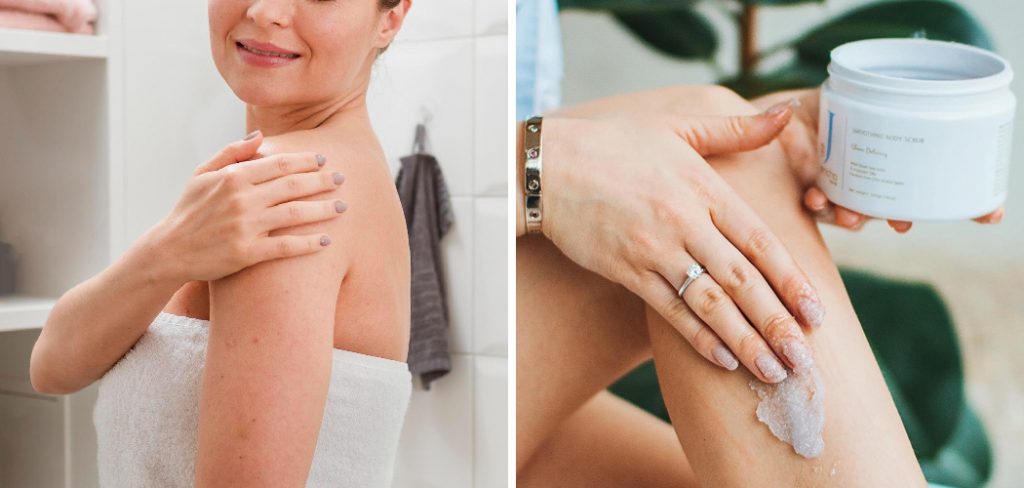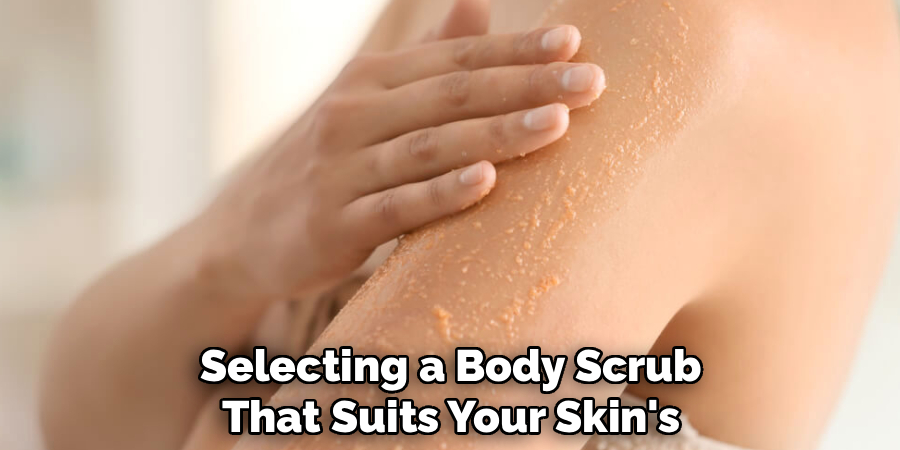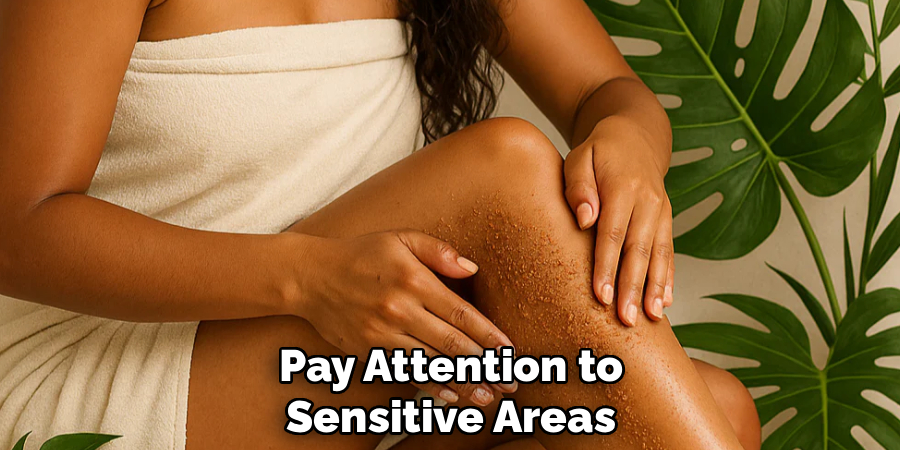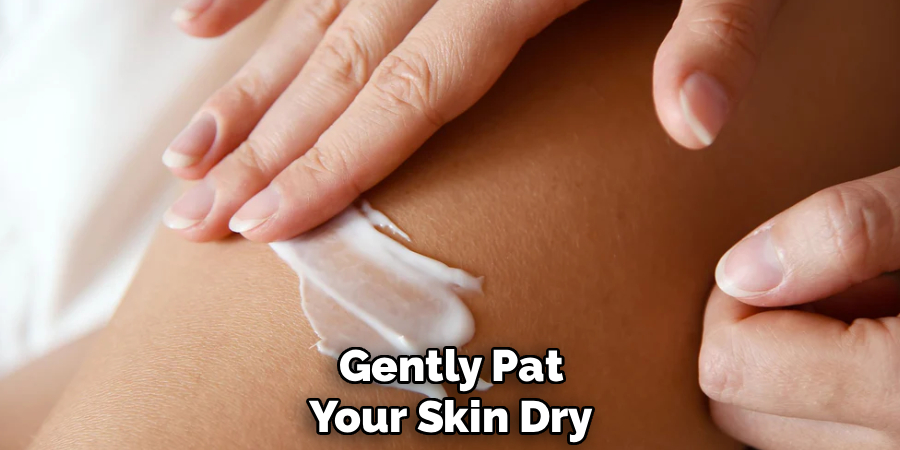Learning how to apply body scrub correctly can transform your skincare routine from a simple cleansing step into a rejuvenating spa-like experience. Proper application ensures you get an even exfoliation without being too harsh on your skin, revealing the healthy, glowing layer underneath.

This guide will provide a clear, step-by-step process for using a body scrub effectively. From preparing your skin to the final moisturizing step, you will learn everything you need to know to incorporate this essential treatment into your regular beauty regimen, ensuring your skin stays soft, smooth, and vibrant.
Why Applying Body Scrub Correctly Matters
Understanding the correct application method for a body scrub is essential for protecting your skin’s health while achieving the best results. Improper techniques, such as applying too much pressure or using scrubs on dry skin, can cause micro-tears, redness, and irritation. Proper application ensures gentle yet effective removal of dead skin cells, which in turn prevents clogged pores and improves overall skin tone. It also boosts circulation and stimulates cell renewal. By following the right steps, you ensure that the exfoliation process is a beneficial treatment that enhances skin hydration and radiance, rather than a damaging one.
Body scrubs are a luxurious and effective way to achieve smooth, radiant skin by sloughing away dead skin cells and impurities. This process, known as exfoliation, not only improves skin texture but also enhances the absorption of moisturizers and other skincare products. While it seems straightforward, there is a proper technique involved to maximize benefits and avoid irritation.
8 Step-by-Step Guide: How to Apply Body Scrub
Step 1: Choose the Right Body Scrub for Your Skin Type
Before you begin, selecting a body scrub that suits your skin’s needs is a crucial first step. Scrubs come in various formulations, with different types of exfoliants like sugar, salt, coffee grounds, or synthetic beads. Sugar scrubs are generally gentler and dissolve in water, making them ideal for sensitive skin. Salt scrubs are more abrasive and contain minerals that can help detoxify the skin, making them better for areas with rough patches.

Coffee scrubs are known for their stimulating effects on circulation. Read the ingredients to ensure the scrub contains nourishing oils that will help with skin hydration during the exfoliation process.
Step 2: Prepare Your Skin with Warm Water
The ideal time to use a body scrub is during a warm shower or bath. The warmth and steam help to open up your pores, making it easier to slough away dead skin cells and impurities. Stand under the shower for about five to ten minutes to allow your skin to soften completely. This preparation step is vital for effective exfoliation and helps prevent the irritation that can occur if you apply a scrub to dry or unprepared skin. Cleansing your skin with your regular body wash before you exfoliate also ensures that you are working on a clean surface.
Step 3: Apply the Scrub Using Gentle Circular Motions
Once your skin is soft and damp, turn off the water for a moment. Scoop a generous amount of the body scrub into your palm. Start at your feet and work your way up your body, which helps to promote circulation towards your heart. Apply the scrub in gentle, circular motions, paying special attention to rougher areas like your knees, elbows, and heels. This technique effectively lifts dead skin cells without being too aggressive. Avoid applying too much pressure, as the exfoliating particles in the scrub are designed to do the work for you. Let the product do its job.
Step 4: Pay Attention to Sensitive Areas
While exfoliation is beneficial, certain areas of your body are more delicate and require a gentler touch. When applying the scrub to your chest, neck, and stomach, use very light pressure. The skin in these areas is thinner and more prone to irritation. You should avoid using a body scrub on your face unless the product is specifically designed for both.
Similarly, avoid applying the scrub to any areas with sunburn, open cuts, or other forms of skin irritation, as this can cause pain and further damage. This careful approach to how to apply body scrub ensures a safe experience.

Step 5: Rinse Thoroughly with Lukewarm Water
After you have scrubbed your entire body, it’s time to rinse off. Turn the shower back on and use lukewarm water to wash away all the exfoliating particles. Make sure you rinse completely, as any leftover scrub can cause irritation or leave a gritty feeling on your skin. Gently run your hands over your skin to ensure all the product has been removed. Avoid using hot water, as it can strip your skin of its natural oils, leaving it feeling dry and tight after you have just worked to make it soft and hydrated.
Step 6: Pat Your Skin Dry Gently
Once you have rinsed off the scrub, step out of the shower and gently pat your skin dry with a soft, clean towel. Do not rub your skin vigorously, as this can be too harsh on your newly exfoliated skin and can cause irritation. The goal is to leave your skin slightly damp, not completely dry. This slight dampness will help the moisturizer you apply next to lock in hydration more effectively, leaving your skin feeling supple and smooth. This step is a crucial part of the overall moisturizing routine that follows a good exfoliation session.
Step 7: Moisturize Immediately After Exfoliation
The final and perhaps most important step is to moisturize. Applying a rich body lotion, cream, or oil immediately after patting your skin dry helps to soothe, hydrate, and protect your newly revealed skin cells. Since exfoliation removes the top layer of dead skin, your skin is primed to absorb moisture more effectively. This step locks in hydration, maximizes the smooth feeling from the scrub, and helps to maintain your skin’s protective barrier. Choose a moisturizer that is rich in nourishing ingredients to complete your skincare routine and keep your skin glowing.

Benefits of Regular Exfoliation
Regular exfoliation offers numerous benefits for your skin, contributing to a healthier and more radiant complexion. By removing dead skin cells, it helps to unclog pores, reducing the likelihood of blackheads and breakouts. This process also promotes cell turnover, which can improve skin texture and tone, leaving it smoother and more even.
Additionally, exfoliation enhances blood circulation, giving your skin a natural, healthy glow. Incorporating exfoliation into your routine can also boost the effectiveness of other skincare products, as it allows serums and moisturizers to penetrate deeper into the skin. Over time, regular exfoliation can help reduce the appearance of fine lines and wrinkles, maintaining a youthful and revitalized look.
Frequently Asked Questions
How Often Should I Use a Body Scrub?
For most skin types, using a body scrub one to two times per week is ideal. Over-exfoliating can strip the skin of its natural oils and lead to irritation or sensitivity. If you have very sensitive skin, you might want to stick to just once a week. Pay attention to how your skin responds and adjust your routine accordingly.
Can I Use Body Scrub on My Face?
It is generally not recommended to use a body scrub on your face. The skin on your face is much more delicate than the skin on your body, and the exfoliating particles in a body scrub are usually too coarse. This can cause micro-tears and irritation. Always use a product specifically formulated for facial exfoliation.
Should I Shave Before or After Using a Body Scrub?
It is best to use a body scrub before shaving. The exfoliation process helps to remove dead skin cells that can clog your razor, allowing for a closer and smoother shave. It can also help to prevent ingrown hairs. Shaving after exfoliating can cause irritation, as you are shaving freshly revealed skin.
What Is the Difference Between a Sugar and a Salt Scrub?
The main difference is the size and shape of the exfoliating particles. Salt granules are generally larger and more abrasive, making them great for rough spots like elbows and feet. Sugar granules are smaller, rounder, and gentler, and they dissolve more easily in water, making them a better choice for sensitive skin.

Can I Make My Own Body Scrub at Home?
Yes, you can easily make a DIY body scrub at home. A simple recipe is to mix a coarse exfoliant like sugar or coffee grounds with a moisturizing oil like coconut, olive, or almond oil. You can also add a few drops of your favorite essential oil for a pleasant fragrance.
Conclusion
Mastering how to apply body scrub is a simple yet transformative step toward achieving consistently smooth and radiant skin. By following a structured process, you can turn a basic shower into a beneficial skincare treatment that promotes health and vitality from head to toe. This practice is more than just a luxury; it’s a fundamental part of a complete moisturizing routine.
Incorporating a body scrub into your weekly routine is an excellent act of self-care that delivers visible results. With just a small amount of effort, you can slough away dullness and reveal the soft, glowing skin that lies beneath. Your skin will thank you for the extra attention.
About the Author
Jane Hubbard is a passionate beauty expert with a wealth of experience in makeup, hair, and overall beauty techniques. After years of working as a hairdresser specialist, she followed her entrepreneurial spirit and started her own consultancy business.
Jane has always been driven by her desire to help others feel confident in their own skin, and she does this by sharing her knowledge, experiences, and practical beauty tips. Through her consultancy, she empowers individuals to embrace their unique beauty, offering tailored guidance that boosts both self-esteem and personal style.
Professional Focus
- Specializes in makeup, hairstyling, and beauty consulting.
- Provides personalized beauty advice, tips, and techniques to help individuals feel confident in their appearance.
- Dedicated to staying up-to-date with the latest industry trends and developments.
- Passionate about creating a comfortable and empowering experience for every client.
Education History
- University of Craft and Design – Bachelor of Fine Arts (BFA) in Woodworking and Furniture Design
- Woodworking Apprenticeships – Extensive hands-on training with skilled craftsmen to refine carpentry and furniture making techniques
- Online Courses & Masterclasses – Continued education in advanced woodworking techniques, design principles, and specialized tools
Expertise:
- Makeup artistry, hairstyling, and beauty consulting.
- Personalized beauty techniques to enhance confidence and self-expression.
- Educating clients on how to maintain their beauty routines at home.
